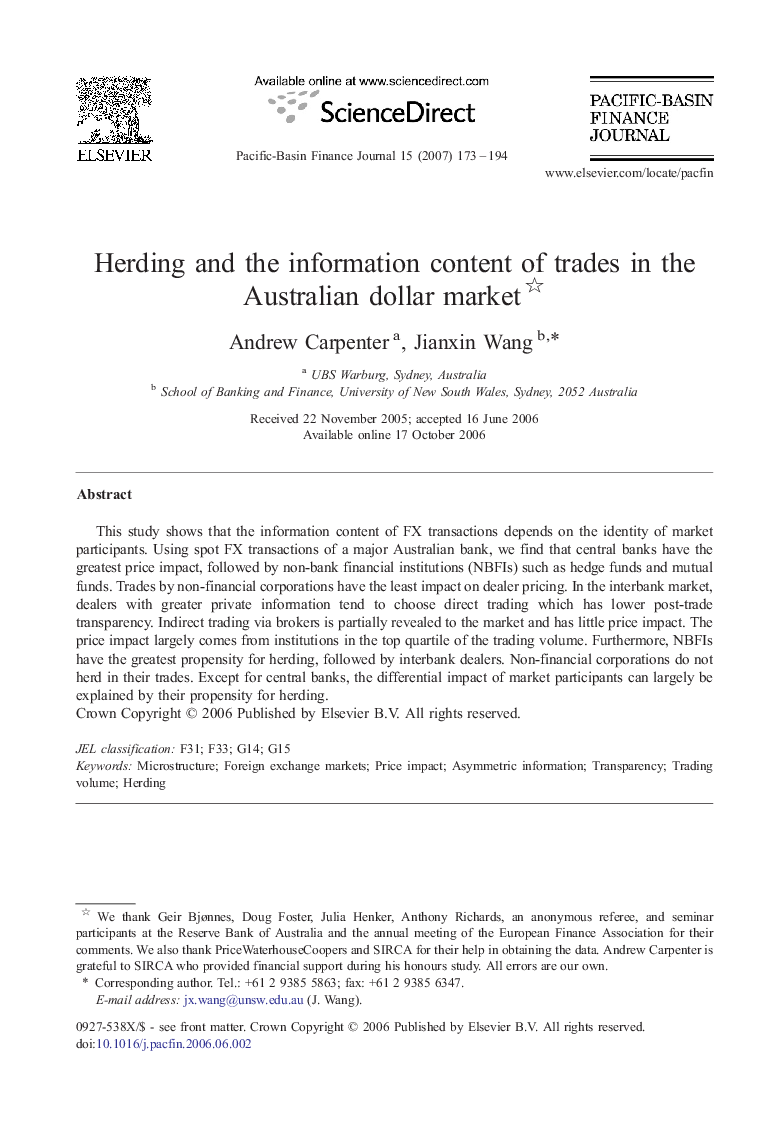| Article ID | Journal | Published Year | Pages | File Type |
|---|---|---|---|---|
| 973922 | Pacific-Basin Finance Journal | 2007 | 22 Pages |
This study shows that the information content of FX transactions depends on the identity of market participants. Using spot FX transactions of a major Australian bank, we find that central banks have the greatest price impact, followed by non-bank financial institutions (NBFIs) such as hedge funds and mutual funds. Trades by non-financial corporations have the least impact on dealer pricing. In the interbank market, dealers with greater private information tend to choose direct trading which has lower post-trade transparency. Indirect trading via brokers is partially revealed to the market and has little price impact. The price impact largely comes from institutions in the top quartile of the trading volume. Furthermore, NBFIs have the greatest propensity for herding, followed by interbank dealers. Non-financial corporations do not herd in their trades. Except for central banks, the differential impact of market participants can largely be explained by their propensity for herding.
